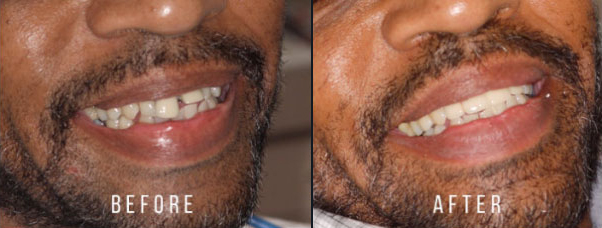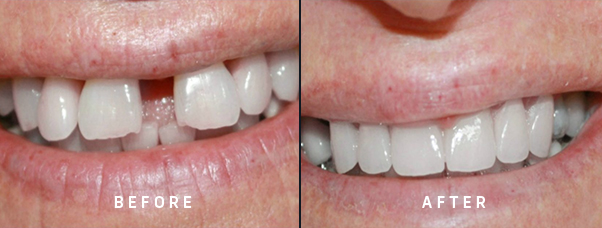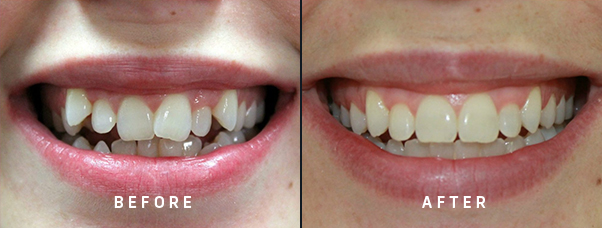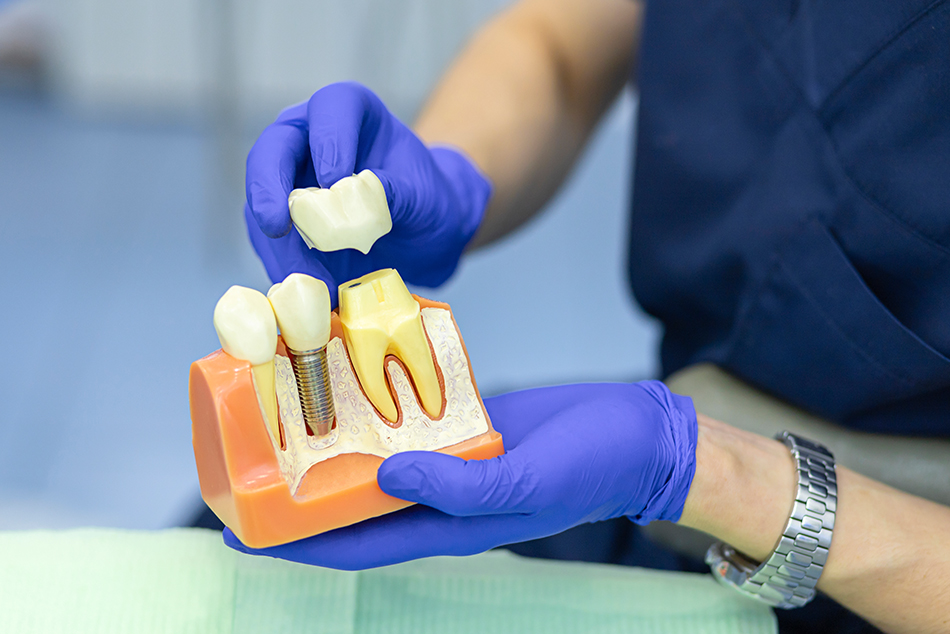
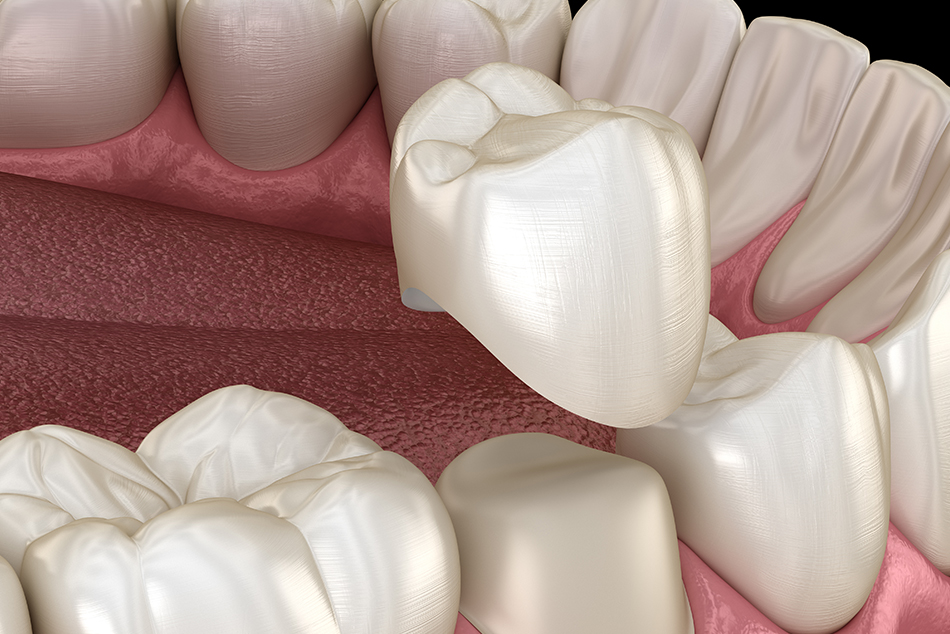
A dental crown, sometimes called a cap, completely covers your damaged tooth. It is cemented into place and offers a strong, solid, good-looking replacement for a natural tooth. A crown is created in a lab and is made from models your dentist makes with impressions, so it fits your mouth perfectly; replicating the shape, size and position of your severely damaged tooth.
No matter the reason you need a crown, it is well worth it. Your tooth will be stronger and more stable, it will last longer, it will look better, and you’ll feel better. Just as with tooth cavity filling materials, many types of dental crown materials exist. Your Dental Associates providers will discuss the options when planning your treatment.
Temporary Crowns
These crowns are acrylic or metal alloy and are made right in the dentist’s office. They cover the tooth while a permanent crown is being created in our in-house dental lab.
Stainless steel Crowns
These are prefabricated crowns that are used on permanent and baby teeth. Stainless steel crowns are generally used for children’s teeth because they are cost-effective and can be put on in one visit.
Metal Crowns
These crowns can be made from cast gold alloys or cast silver palladium alloys. With a metal crown, less tooth structure needs to be removed and the wear on opposing teeth is minimal. Metal crowns withstand biting and chewing well and last the longest. They also rarely chip or break.
Porcelain-fused-to-metal Crowns
These dental crowns contain an inner metal casting with porcelain baked over it. They look natural and can be very aesthetic. Occasionally they may chip and show the underlying metal. Most porcelain crowns are slightly more abrasive and may wear the natural enamel of the opposing teeth.
All Ceramic or All Porcelain Crowns
These crowns are acrylic or metal alloy and are made right in the dentist’s office. They cover the tooth while a permanent crown is being created in our in-house dental lab.

Missing a tooth and having a gap in between your teeth isn’t just unsightly, it can cause other problems. Talking and chewing may be difficult. Teeth adjacent to the space will eventually begin to shift into the empty space which will affect your bite, may lead to gum disease and possibly even jaw joint disorders like temporomandibular joint (TMJ) issues.
One way to take care of a gap caused by a missing tooth is with a dental bridge. There are removable dental bridges, also called partial dentures, that can be removed and cleaned like dentures, and there are permanent dental bridges, sometimes called fixed partial dentures.
A dental bridge is called a bridge because it literally bridges the gap where one or more teeth used to be. Bridges are cemented to the teeth adjacent to the empty space. The adjacent teeth, called abutments, serve as the anchors for the bridge.
The adjacent teeth are trimmed down and capped with a crown, and then a replacement tooth, called a pontic, is attached to those crowns to form the bridge. The unit is securely cemented to your teeth and your smile and ability to chew food is improved.
There are several types of dental bridges. Each bridge is made with different materials and is better suited for certain areas of the mouth and for certain types of situations. Your Dental Associates dentist will recommend the best type of dental bridge based on your individual circumstance.
Traditional Bridges
These are the most common dental bridges. They involve creating a crown for the tooth (abutment) on either side of the missing tooth, with a replacement tooth (pontic) in between. Traditional bridges are made of either porcelain fused to metal or ceramic.
Cantilever Bridges
These bridges are used when the replacement tooth can only be supported from one side. A cantilever dental bridge is typically used when the space is small and the stresses will be minimal. Your Dental Associates dentist will discuss the indications for this type of dental bridge.
Maryland Bonded Bridges
This dental bridge is most commonly used to bridge front teeth together. The Maryland bridge technique, named after the University of Maryland Dental School where it was developed, uses metal or resin “wings” on each side of the bridge that are bonded to the existing teeth. A Maryland bonded bridge is also called a resin-bonded bridge. One of its big advantages is that it requires very little shaping, if any, of the anchor teeth.
Implant-supported Dental Bridges
These bridges are recommended if you’re missing more than one tooth. This technique involves the placement of two or more dental implants with space between them. These implants serve as the abutments (anchors) for the permanently cemented bridgework. Because dental implants simulate tooth roots, they maintain the integrity of the jaw bone and provide a solid support for the bridge.
As with crowns, bridges are made of several different types of materials. Gold, alloy, porcelain or a combination of all of them. Material selection is based on your existing dentition, the area of the mouth to be restored and the type of bridge to be used. Your Dental Associates dentist will recommend the best bridge to keep your mouth at its healthiest and you at your happiest. With proper care and dental hygiene, your bridge will keep you smiling for up to 20 years.
If you have a severely damaged tooth and/or missing teeth and think you could benefit from a crown or bridge, visit our locations page to find our dental clinic near you. Call Our clinic and tell us you’re interested in a consultation with a dentist.
